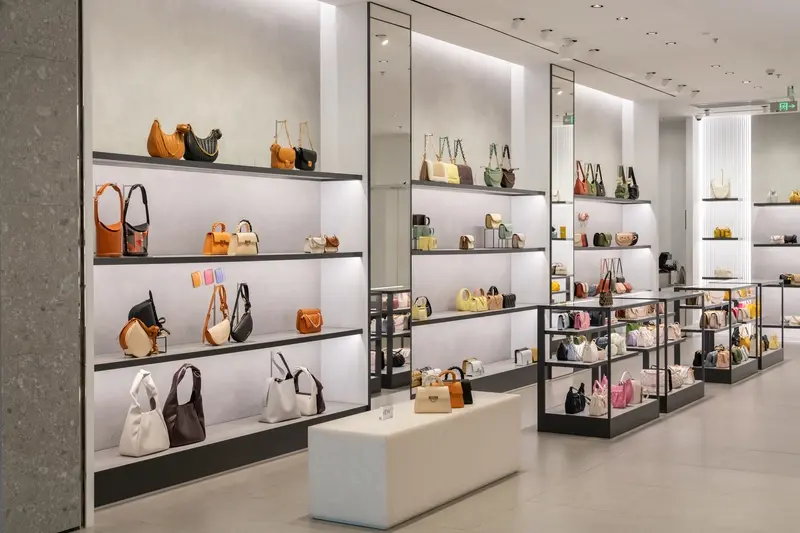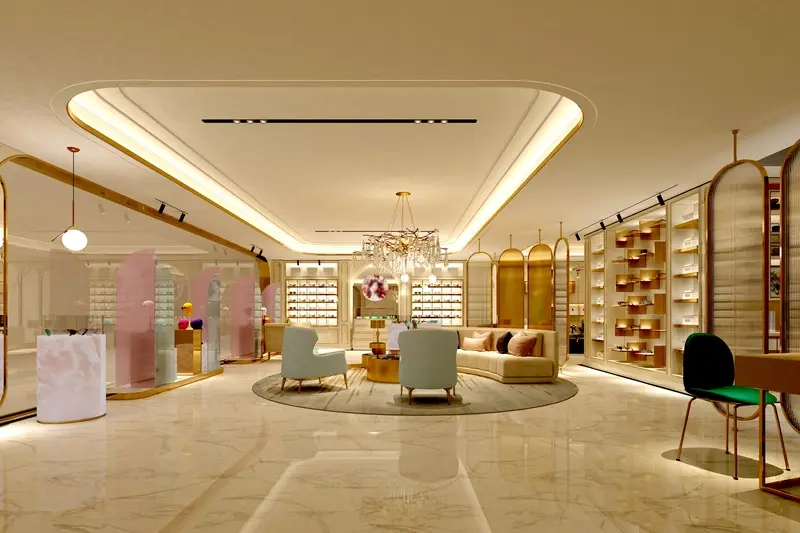Should Luxury Brands Have Different App Strategies?
A Hermès handbag costs £8,000 while a similar bag from the high street might cost £80—both carry your belongings, but one commands a hundred times the price. This same principle applies to mobile apps, where premium brands face unique challenges that regular businesses simply don't encounter. The question isn't whether luxury brands should have different app strategies; it's how dramatically different these strategies need to be.
When we talk about premium brands and their market positioning, we're dealing with companies that have spent decades—sometimes centuries—building their reputation. Their brand approach can't be compromised by a poorly thought-out mobile experience. A luxury brand's app isn't just another digital touchpoint; it's a reflection of everything they stand for.
The luxury customer expects the same level of service and attention to detail in a mobile app as they would in a flagship store on Bond Street
This guide will walk you through exactly why premium brands need to think differently about their mobile strategy. We'll explore everything from understanding your high-end audience to avoiding the common pitfalls that can damage years of carefully built brand equity. Whether you're a luxury brand looking to enter the mobile space or curious about what makes premium app strategies unique, this guide will give you the insights you need.
What Makes Premium Brands Different From Regular Ones
I've worked with all sorts of brands over the years—from scrappy startups to luxury fashion houses—and let me tell you, premium brands operate in a completely different universe. They're not just selling products; they're selling dreams, status, and experiences that people are willing to pay extraordinary amounts for.
The biggest difference? Premium brands understand that scarcity creates desire. When Apple releases a new iPhone, they don't flood the market immediately. When Hermès crafts a Birkin bag, there's a waiting list that stretches for months. This isn't accidental—it's strategic. Regular brands want to sell to everyone; premium brands want to sell to the right people.
Quality Over Quantity
Premium brands also obsess over details that regular brands might overlook. The weight of a business card, the sound a car door makes when it closes, the texture of packaging—these tiny elements matter because they reinforce the brand's positioning. Every touchpoint needs to whisper "expensive" without actually saying it.
The Experience Economy
Most importantly, premium brands sell experiences, not just products. When someone buys a Rolex, they're not just buying a timepiece—they're buying into a legacy of craftsmanship and exclusivity. This mindset changes everything about how these brands approach their digital presence, including their mobile apps.
Understanding Your Luxury Target Audience
When I work with premium brands, one of the biggest mistakes I see is assuming that luxury customers are just regular customers with more money. That's not how it works at all! Luxury consumers have completely different expectations, behaviours, and motivations that shape every interaction they have with your brand.
Think about it this way—someone buying a £20 watch wants to know the time, but someone buying a £20,000 watch wants an experience, status, and craftsmanship. The same principle applies to mobile apps. Your luxury audience isn't downloading your app because they need another shopping platform; they're looking for something that reflects their lifestyle and values.
What Luxury Customers Actually Want
Premium brand customers prioritise quality over quantity every single time. They'd rather have fewer features that work flawlessly than dozens of mediocre ones. They expect personalised experiences—not just their name in an email, but genuine recognition of their preferences and purchase history.
Never underestimate the power of exclusivity. Luxury customers want to feel special, so consider features like early access to collections, VIP customer service, or members-only content that regular customers can't access.
The Psychology Behind Premium Purchases
Luxury buyers are emotional purchasers who justify with logic later. They want to feel the prestige, the craftsmanship, and the story behind your brand. Your app needs to capture these feelings, not just facilitate transactions.
- Exclusivity and scarcity drive desire
- Personal service expectations are sky-high
- Brand heritage and storytelling matter more than features
- Privacy and discretion are non-negotiable
- Seamless, intuitive experiences are expected, not appreciated
Understanding these psychological drivers will completely change how you approach your app's design, functionality, and market positioning. Get this right, and you'll create loyal customers who become brand ambassadors.
Why Premium Apps Need Special Design Thinking
I've worked with luxury brands for years now and let me tell you something—designing apps for premium brands is nothing like designing for regular companies. The rules are completely different. What works for a budget retailer will actually damage a luxury brand's reputation, and I've seen this happen more times than I care to count.
Premium brands can't just slap together a standard app template and call it a day. Their customers expect something special, something that reflects the brand's values and quality standards. These users are paying top dollar for products and services, so they want an app experience that matches that level of excellence.
Quality Over Quantity
When designing for luxury brands, less is often more. Premium apps need clean, sophisticated interfaces with plenty of white space. Every element needs to serve a purpose—no clutter, no unnecessary features, no flashy animations that cheapen the experience. The design should whisper elegance rather than shout for attention.
Performance Matters More
Luxury customers won't tolerate slow loading times or buggy features. They expect perfection, and rightfully so. This means investing in top-tier development, rigorous testing, and ongoing optimisation. A premium app that crashes or performs poorly doesn't just lose users—it damages the entire brand's reputation.
Building Trust and Exclusivity Through Technology
When I work with premium brands, one of the biggest challenges they face is making their app feel as exclusive as their physical products. You can't just slap a luxury logo on a standard app template and call it premium—trust me, I've seen this attempted more times than I care to count! The technology itself needs to reinforce your brand approach and market positioning.
Authentication is where most luxury apps start building that exclusive feeling. Think member-only access, invitation codes, or tiered membership levels that unlock different features. Some of our clients have used biometric authentication not just for security, but to make the login process feel more sophisticated than typing in a password.
Creating Digital Scarcity
Premium brands excel at creating scarcity in the physical world, and your app should mirror this. Limited-time access to certain features, exclusive content that disappears after viewing, or early access to new products for app users only. These aren't just marketing tricks—they're fundamental to how premium brands maintain their positioning.
The moment your luxury app feels like everyone else's is the moment you've lost what makes you premium
Push notifications need special attention too. Regular brands might send daily deals and promotional spam, but premium brands should treat every notification like a personal invitation. Quality over quantity always wins when you're dealing with discerning customers who value their time and attention.
Pricing Strategies That Work for High-End Mobile Apps
When it comes to premium mobile apps, I've noticed many brands get pricing completely wrong. They either charge too little—thinking they need to compete with free apps—or they go the other way and price themselves out of the market entirely. The truth is, luxury app pricing follows different rules than regular consumer apps.
Premium pricing works best when you're offering genuine value that justifies the cost. Think Headspace or Calm; they charge monthly subscriptions because they deliver consistent, high-quality content. Your luxury brand app should do the same. The key is making users feel they're getting something special that free alternatives can't match.
Premium Pricing Models That Actually Work
- Subscription tiers with exclusive content or features
- One-time premium purchases for full access
- Freemium with substantial paid upgrades
- Members-only apps with annual fees
- In-app purchases for luxury experiences
The biggest mistake I see is brands copying mass-market pricing strategies. Your customers expect to pay more for premium experiences; that's part of what makes them feel exclusive. Price your app like you would price your physical products—with confidence and clear value proposition.
Test different price points during soft launches, but don't undervalue your brand just to increase downloads. Quality users who pay premium prices are worth more than thousands of free users who never engage.
Marketing Your Luxury Brand App to the Right People
Getting your luxury app in front of the right people is completely different from marketing regular apps. You can't just throw ads at everyone and hope something sticks—that's not how premium brands work. Your market positioning needs to be spot on because you're not selling to everyone; you're selling to a very specific group of people who value quality over quantity.
The biggest mistake I see premium brands make is treating their app marketing like any other product launch. They'll post on every social media platform, send mass emails, and wonder why their conversion rates are terrible. Luxury consumers don't want to be sold to—they want to be invited in.
Finding Your Premium Audience
Your brand approach should focus on exclusivity rather than reach. Think invitation-only previews, personalised demonstrations, and partnerships with high-end retailers or concierge services. These channels might seem smaller, but they're where your actual customers spend their time.
- Partner with luxury lifestyle publications for editorial features
- Use targeted campaigns on platforms where affluent users gather
- Create exclusive preview events for existing customers
- Work with premium influencers who align with your brand values
Focus on quality metrics over vanity metrics. A thousand downloads from your target audience is worth more than a million downloads from people who'll never engage with your brand.
The Power of Word-of-Mouth
Premium brands live and die by reputation. Your existing customers are your best marketing tool—they're the ones who will recommend your app to their peers. Make it easy for them to share their experience, but do it tastefully. No gaudy "refer a friend" pop-ups!
Common Mistakes Premium Brands Make With Their Apps
I've worked with some incredible luxury brands over the years, and honestly, watching them stumble with their apps is painful. These companies know their stuff when it comes to creating beautiful products and experiences in the real world—but when it comes to mobile apps, they often get it spectacularly wrong.
The biggest mistake I see? Trying to cram everything into one app. Premium brands think that because they have multiple product lines, they need to showcase all of them. This creates cluttered, confusing apps that make users feel overwhelmed rather than special.
The Most Common Pitfalls
- Making the app too complicated with unnecessary features
- Forgetting that mobile screens are small and require different design approaches
- Not investing enough in proper testing before launch
- Copying what mass-market brands do instead of creating something unique
- Rushing the development process to meet unrealistic deadlines
Another big one is treating the app like a digital catalogue rather than an experience. Your customers can already browse your products online—they want something more from your app. They want to feel like they're part of an exclusive club, not just scrolling through another shopping list.
The worst part? These mistakes are completely avoidable if you take the time to understand what makes mobile different from everything else you do.
Conclusion
After working with premium brands for years, I can tell you that luxury apps aren't just regular apps with fancier colours—they need a completely different approach. The market positioning of premium brands requires careful thought about every single detail, from how the app loads to how customers feel when they use it.
Your brand approach should never compromise on quality or exclusivity. I've seen too many luxury brands try to copy what mass-market apps do, and it never works. Your customers expect something special, something that reflects the premium nature of your brand. They don't want to feel like they're using the same app as everyone else.
The most successful premium brands understand that their app isn't just another sales channel—it's an extension of their brand identity. Every interaction should feel exclusive and valuable. Whether that's through personalised experiences, premium customer service, or simply making sure the app works flawlessly every time.
Building apps for premium brands is challenging but rewarding work. Get it right, and you'll create something that truly connects with your high-end customers. Get it wrong, and you risk damaging the very exclusivity that makes your brand special in the first place.
Share this
Subscribe To Our Learning Centre
You May Also Like
These Related Guides

How Much Should a Luxury Brand Spend on Their Mobile App?

What Features Do High-End Customers Expect In Luxury Apps?



